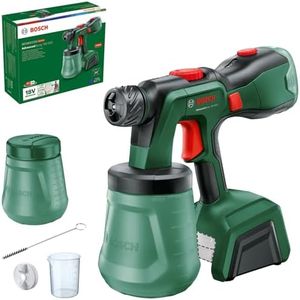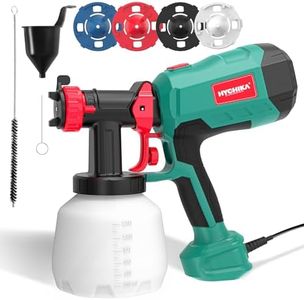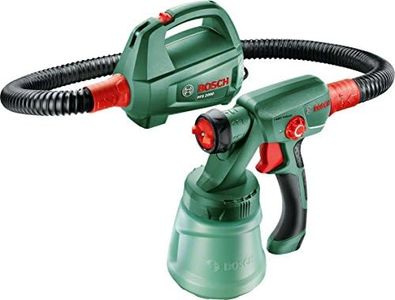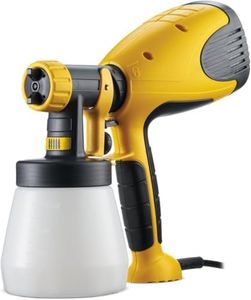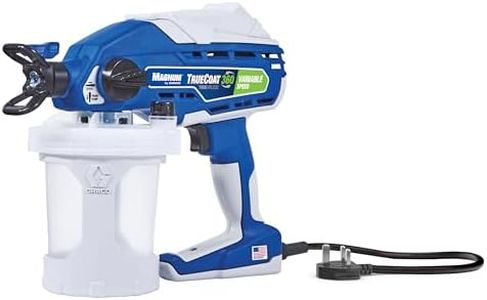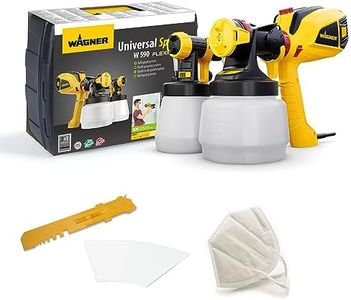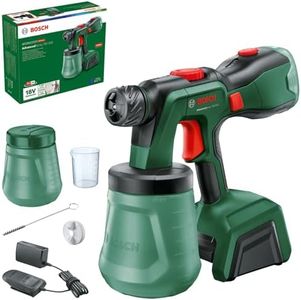We Use CookiesWe use cookies to enhance the security, performance,
functionality and for analytical and promotional activities. By continuing to browse this site you
are agreeing to our privacy policy
10 Best Electric Paint Sprayers
From leading brands and best sellers available on the web.Buying Guide for the Best Electric Paint Sprayers
Choosing the right electric paint sprayer can make your painting projects quicker, easier, and give a smoother finish than traditional brushes or rollers. The secret to picking the best sprayer for you lies in understanding key features and knowing how your own needs – like project size, types of paint, and surfaces – should guide your decision. By paying attention to the main specifications and how they relate to your intended projects, you can find a sprayer that’s reliable, easy to use, and delivers great results every time.Type of Sprayer (HVLP, Airless, or Compressed)There are three main types of electric paint sprayers: HVLP (high volume low pressure), airless, and compressed. HVLP sprayers use a steady airflow to deliver precise, controlled sprays with minimal overspray, making them great for furniture and trim work. Airless sprayers pump paint at high pressure for fast coverage and are ideal for large surfaces like walls or fences. Compressed sprayers use an external compressor to atomize paint, offering versatility but requiring more setup. To choose, think about whether you need fine detail (HVLP), speed and power (airless), or maximum versatility (compressed).
Spray Pattern ControlSpray pattern control refers to the shape and direction of the paint as it leaves the sprayer. Some models let you adjust between horizontal, vertical, or circular patterns, which is useful for switching between wide surfaces and tight corners. If you plan to work on varied projects, a sprayer with adjustable patterns gives more flexibility and helps you avoid wasted paint and mess.
Paint Flow RatePaint flow rate, usually measured in gallons or liters per minute, tells you how much paint the sprayer can put out over time. A higher flow rate means faster coverage, which is great for big projects, but might be too much for small, detailed work. If you mostly do small projects, a lower flow rate provides more control and less mess. For larger areas, look for a higher flow rate to get the job done quickly.
Motor PowerMotor power is usually given in watts or horsepower and tells you how powerful the sprayer is. More power can handle thicker paints or larger nozzles without clogging, making robust motors better for big jobs or heavy coatings. For lighter indoor jobs with thin paints, a less powerful motor works just fine. Match the power of the sprayer to the type of paint you’ll use most often and the size of your projects.
Ease of CleaningCleaning up after painting is a big part of the experience. Some sprayers are designed to come apart easily for thorough cleaning, or even connect to a garden hose for rinsing. If you want to avoid hassle and keep your equipment in good shape, look for a sprayer that emphasizes quick and simple cleaning steps, especially if you’ll be changing paint colors often.
Nozzle and Tip SizesNozzle and tip sizes control how thick or thin the spray comes out and what kinds of paint you can use. Smaller nozzles are suited to thin paints and detail work, while larger tips work for thick paints like latex or for big surfaces. A sprayer that supports interchangeable tips offers greater versatility. Choose based on the common types of projects and paints you’ll use – small nozzles for craft projects, large ones for walls or exteriors.
Portability and WeightPortability and weight affect how easy the sprayer is to move and handle, especially for longer jobs or projects in multiple locations. Lightweight, compact designs are easier for smaller spaces or overhead work, while larger, wheeled units are more suited to big, open areas. Consider how much you’ll need to move the sprayer and whether you’re comfortable holding it for extended periods.



